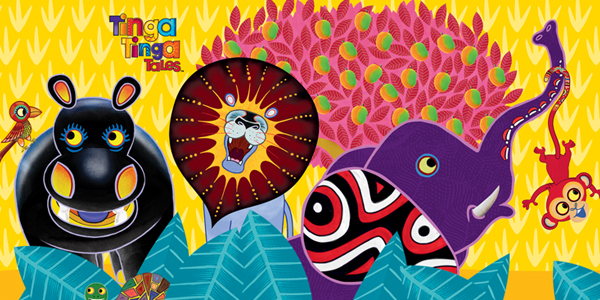 Animation in Africa breaks many stereotypes and preconceptions. It is not all about the ‘exotic’. The films can be political and often subversive offering new windows into representations of Africa. The technology used can range from the inventive to the very advanced. The representations of Africa we tend to see on mainstream media in the West offer a particular snapshot that serves to embed further the misconceptions of animation in Africa.
Animation in Africa breaks many stereotypes and preconceptions. It is not all about the ‘exotic’. The films can be political and often subversive offering new windows into representations of Africa. The technology used can range from the inventive to the very advanced. The representations of Africa we tend to see on mainstream media in the West offer a particular snapshot that serves to embed further the misconceptions of animation in Africa.
A chance conversation between Paula Callus, who had just started lecturing at BU’s National Centre for Computer Animation (NCCA), and an animation student from Ghana, Samuel Quartey, led her to pursue her research in animation from Africa.
“We talked about visual metaphors in cinematography and the cultural significance of these,” she explains. “A typical image sequence to represent time passing may be a tree going through the transitions of four season changes. But in Ghana these four distinct changes do not happen, so this meaning is specific to the West. I realised how little we knew about animation in Ghana, and indeed in Africa in general, so I thought, wouldn’t it be brilliant to find out more?”
Paula found that the literature within animation studies was limited to accounts of animation in Europe, or the US and that Africa was largely under-researched. As a result, she is now setting about documenting how animation is used, its various histories and exploring the power that it has on the African continent.
“Animation in Africa is a very exciting form that is only just being discovered now”, she says. “If we don’t record its existence and developments, they will disappear in time.”
Paula worked for a Swedish TV company on motion graphics before coming to BU to do her Masters. “I came for one reason,” she explains. “I would be studying at the NCCA.”
United Nations Educational, Scientific and Cultural Organisation (UNESCO) saw a short description of her work on the NCCA website and contacted Paula. She was invited to join a team of consultants developing a five-week training residency, known as the Africa Animated project.
“I became an animation trainer on a five-week residential course in Zanzibar and Nairobi. This was a fantastic opportunity as I could learn so much whilst I was teaching.”
The program ran for four years across different African countries with applicants from a range of Sub-Saharan countries. Those trained have since gone on to work on a diverse range of animated projects, including international productions like the animated series Tinga Tinga Tales, feature length 3D animations like Zambezia in South Africa, and the local political television series The XYZ Show in Kenya. Independent short films have been screened at international festivals, including Africa in Motion, Edinburgh and the New York African Film Festival.
One of the recent themes Paula’s research has picked up on is how animation in Africa is used to get across subversive messages through subtle uses of metaphor, parody, and humour. “Animation is seen typically as something for children, appearing harmless and unsophisticated, yet this very fact allows an artist to hide very strong political messages behind this veil of innocence. This is what gives it power.”
Paula says the introduction of the internet and digital technology is having a fantastic effect on the development of the animation industry in Africa, both for making films and for democratising their distribution. “Many animators are using their mobile phones to make films and distribute them. This is making the industry much more reactive to events going on and giving it an edge.”
“Animation in Africa is not a homogenous genre of filmmaking. Each country on the African continent has a specific set of social, political and economic conditions that are unique to it. For these reasons the variety of style, content and techniques range accordingly. This assortment makes for a fascinating collection of artistic practices that on some occasions move beyond the work of an auteur towards the start of a fledgling industry.
“My research aims to offer a counter narrative to the dominant discourses we find on Disney and other global players that have dominated Western popular culture and similarly dominated academic discussion in this field. It seeks to redress the balance by drawing attention to the variety of artistic forms and practices that stem from different African countries and that can provide a window into the cultures that inform it.”
Edited article via Bournemouth University
